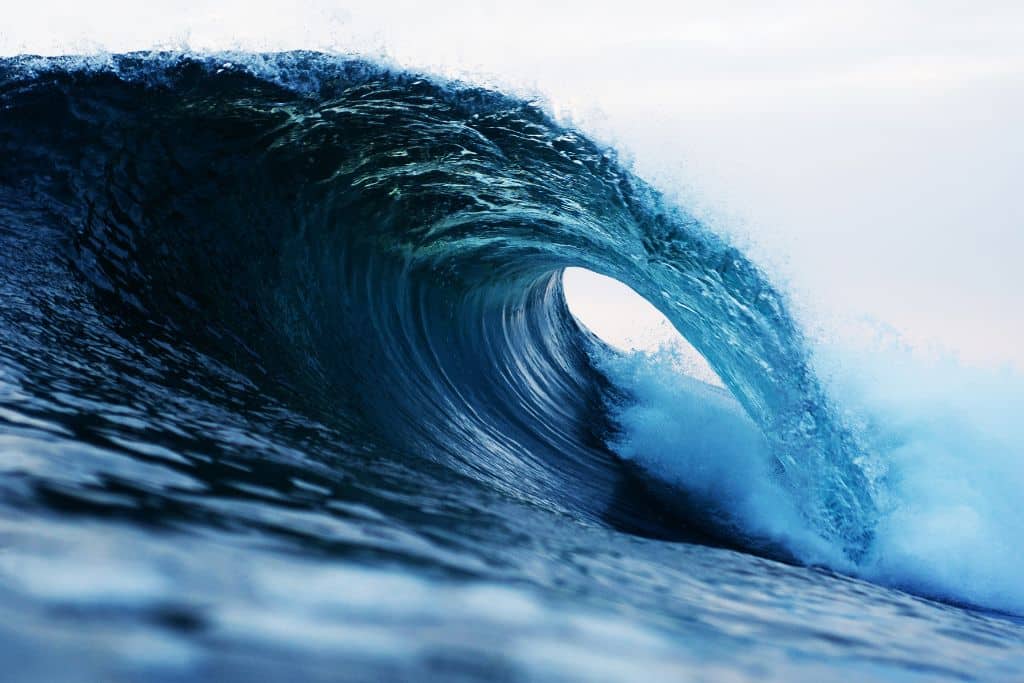In recent times, the world has witnessed remarkable strides in the field of wave energy, unveiling a potential solution to our increasing energy demands while addressing some pressing environmental concerns. Notably, Italian energy giant ENI unveiled the groundbreaking Inertial Sea Wave Energy Converter, while China introduced the colossal ‘Nankun’ floating wave energy device, drawing global attention to this less-familiar yet promising energy source. This article delves into the world of wave energy, exploring what it is, its potential contributions to sustainability and the green industry, as well as the concerns and challenges that accompany its rise.
—
What Is Wave Energy?
Wave energy is a clean and renewable energy source harnessed from the perpetual movement of ocean waves. Unlike some of its renewable energy counterparts, wave power derives from the wind’s interaction with the ocean’s surface, setting in motion a rhythmic pattern of wave oscillation. To capture this energy, specialised devices known as wave energy converters (WECs) are strategically placed in the ocean. These ingenious machines are designed to move harmoniously with the ebb and flow of the waves, effectively transforming this kinetic energy into either mechanical or hydraulic power.
The world of WECs offers a diverse range of designs, each suited to specific oceanic conditions and engineering preferences. For instance, ENI’s Inertial Sea Wave Energy Converter takes the form of a floating platform that dances in rhythm with the waves. Within this platform, gyroscopes and other intricate components exploit the inertial forces generated by the wave’s motion. As the converter sways with the waves, the gyroscopes within it resist this movement due to their substantial weight. This resistance results in the creation of mechanical energy, subsequently converted into electrical power via an integrated generator system.
You might also like: Examining the Pros and Cons of Hydroelectric Energy
The Great Potential of Wave Energy
The potential of wave power is nothing short of astounding, offering a transformative solution to our energy landscape. Consider the theoretical annual energy potential of waves along the United Kingdom’s coastlines, estimated at a staggering 2.64 trillion kilowatt hours. This amount, equivalent to approximately two-thirds of the total electricity generated in the US in 2021, underscores the immense untapped resource that lies beneath the ocean’s surface.
Moreover, one of wave energy’s distinctive advantages lies in its predictability. Unlike other renewable sources such as wind and solar, which are subject to the vagaries of changing weather conditions, ocean waves follow consistent and forecastable patterns. This reliability translates into a stable and dependable source of electricity – a crucial factor for grid stability and energy planning.
Concerns and Challenges
While wave power presents a promising avenue for clean and renewable power generation, it is not without its concerns and potential drawbacks.
One of the primary concerns relates to its impact on marine life. The presence of wave-energy devices can disrupt marine habitats and behaviours in various ways, causing disturbance to marine mammals. These animals, unable to detect devices through sound signals, may inadvertently collide with them or become entangled in mooring cables. Additionally, the mere presence of these structures might prompt alterations in the migration patterns and behaviours of marine species as they seek to avoid interactions.
Furthermore, the electromagnetic fields generated by wave-energy installations could disrupt the feeding and orientation of marine species. Additionally, the interaction between waves and the energy-capturing devices themselves might lead to changes in wave characteristics, influencing sediment movement, ocean currents, and the overall structure of the water column.
It is important to note that our understanding of these potential impacts is still evolving, primarily because wave power is a field actively under development. Additionally, the environmental effects associated with wave energy can vary widely depending on factors such as the size, material composition, operational characteristics, and placement of specific wave-energy devices.
Economic Challenges
In addition to environmental concerns, the economic challenges of wave power cannot be overlooked. The high costs of installation and ongoing maintenance in the demanding marine environment pose a significant barrier to the widespread development of this energy source. The initial setup of wave-energy devices demands substantial capital investment to design systems capable of withstanding the corrosive saltwater, powerful waves, and adverse weather conditions that characterise the open ocean.
Furthermore, ongoing maintenance is costly due to the relentless wear and tear resulting from exposure to the sea’s harsh elements. These maintenance efforts often require specialised equipment and skilled personnel, further contributing to operational expenses. Interestingly, due to the cost of installation and maintenance, finding a suitable underwater site for these devices and securely anchoring them can be two to three times more expensive than the actual cost of the WEC device itself.
The Road Ahead
Despite these valid concerns, the promise of wave energy as a clean and renewable energy source is undeniable. Its immense potential, coupled with its predictability, underscores its significance in advancing sustainable and reliable energy sources. As wave power technology continues to evolve, ongoing research, innovation, and responsible implementation will be vital in addressing these concerns and harnessing the full promise of wave energy.
Wave energy stands as a testament to our unwavering commitment to cleaner and greener energy solutions that can power our future while preserving and protecting our planet. As we navigate the complexities of this promising field, striking a balance between reaping its benefits and addressing its challenges will be essential in shaping a more diversified, cleaner, and greener energy future for generations to come.
You might also like: Renewables on Track to Become Largest Source of Global Electricity by 2025, IEA Says


















